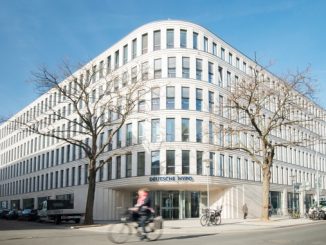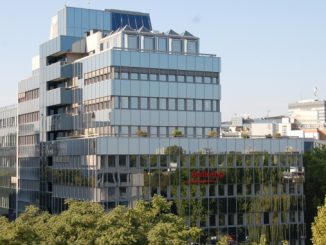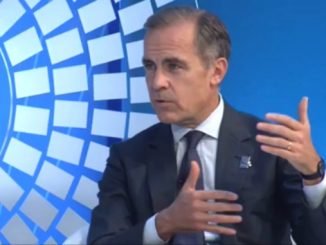
DNB Boligkreditt has established a green covered bond framework based on residential mortgages for the most energy efficient properties in Norway, after compatriot SpareBank 1 Boligkreditt tightened its criteria on the basis of feedback during its Climate Bonds Initiative certification process.
Back in February 2015 DNB became the first Nordic bank to sell a green bond when it issued a NOK1bn (EUR115m) five year senior unsecured deal issued out of the parent bank with financing renewable energy projects as the use of proceeds.
DNB’s new green covered bond programme was announced yesterday (Tuesday).
“We could have easily done more senior green bonds, but we have very limited needs in senior for the time being,” Thor Tellefsen, head of long term funding at DNB (pictured above), told Sustainabonds. “Covered bonds are DNB’s absolute largest funding source and it was then natural for us to see if we could actually do green covered bonds, combining the green initiative with our biggest funding source.”
However, like SpareBank 1 Boligkreditt (SpaBol) and issuers in other countries, DNB’s initial idea of using energy performance certificates (EPCs) as the basis for selecting green buildings was frustrated by a lack of publicly available data. The bank then turned to the idea of using building codes to work out which properties would be the most energy efficient, in line with the methodology used by SpaBol.
SpaBol worked on the basis that newer buildings have to meet stricter energy efficiency criteria as laid down by more modern building codes, and that only allowing properties built according to regulations established in 2007 onwards (and completed from 2009 onwards) would ensure that the selected properties would be among the 15% most energy efficient in Norway – with the 15% cut-off being the typical standard required by the Climate Bonds Initiative (CBI) to achieve its certification.
When SpaBol launched its inaugural green covered bond in January – a EUR1bn seven year issue that was the largest green bank bond issued outside China – it was in the process of attaining the CBI certification. However, discussions about the methodology have only just concluded.
“There’s been a fair amount of debate between our technical consultants and the CBI about the exact criteria required for certification,” said Eivind Hegelstad, CFO and head of investor relations at SpareBank 1 Boligkreditt (pictured below), “so we have tweaked the baseline a little to give the CBI greater comfort.”
 The tweak involves moving the cut-off for flats from the 2007 building code (TEK07) to 2010’s (TEK10), with the properties having to be completed in 2012 or later. However, Hegelstad notes there is no difference between the building codes TEK07 and TEK10 in Norway when it comes to the required building energy efficiency.
The tweak involves moving the cut-off for flats from the 2007 building code (TEK07) to 2010’s (TEK10), with the properties having to be completed in 2012 or later. However, Hegelstad notes there is no difference between the building codes TEK07 and TEK10 in Norway when it comes to the required building energy efficiency.
“In some countries the CBI already has published its proxy for residential buildings, but the Norwegian one only results from a process begun in January after the SpaBol transaction,” said Vincent de Vries, director, FIG DCM at ING, which was the green bond advisor for SpaBol and is sole green structuring advisor for DNB.
“We fully support the structuring of the SpaBol transaction and it is still one that has very significant CO2 emissions savings, it is just that in this case CBI had a slightly different view on the technical details of the applicable building regulation for apartments compared other housing types.”
Both Norwegian banks used technical consultant Multiconsult.
DNB’s new framework uses a TEK10 baseline, allowing residential properties completed in 2012 or later – whether flats or houses. According to Tellefsen, as DNB was not in any hurry to come to market, it could allow the market to digest SpaBol’s methodology and wait until the CBI had had its say.
“We have been working on it for a little while in order to make it as prudent as possible,” said Tellefsen. “It’s a somewhat modified version of what SpaBol did.
“In order to get CBI certification we could only have used houses, and not flats, under TEK07, therefore we decided to go for an even newer building code for all properties, which is cleaner and should give investors even more comfort.”
A market participant suggested that DNB could also afford to choose a tighter cut-off because its larger cover pool means that it can more easily reach the critical mass necessary for a benchmark green covered bond. According to DNB, some NOK53bn of assets in its cover pool are eligible under its framework.
The change to SpaBol’s criteria means that its pool of eligible assets has fallen by around 10%, according to Hegelstad. He said that this means it may take slightly longer before the issuer returns with a follow-up green benchmark, but he noted the bank hopes that ultimately EPC information will become publicly available and selection will then be done on that basis.
Tellefsen said DNB does not have a fixed timetable for an inaugural issue.
“We will travel and present the framework to investors, and then we will take it from there,” he said. “In general DNB is not that seldom in the market – we typically do a couple of covered bond transactions every year – and of course our aim is to utilise this programme.
“But first we want to spend some time getting investors familiar with it.”
Main photo credit: DNB/Flickr



